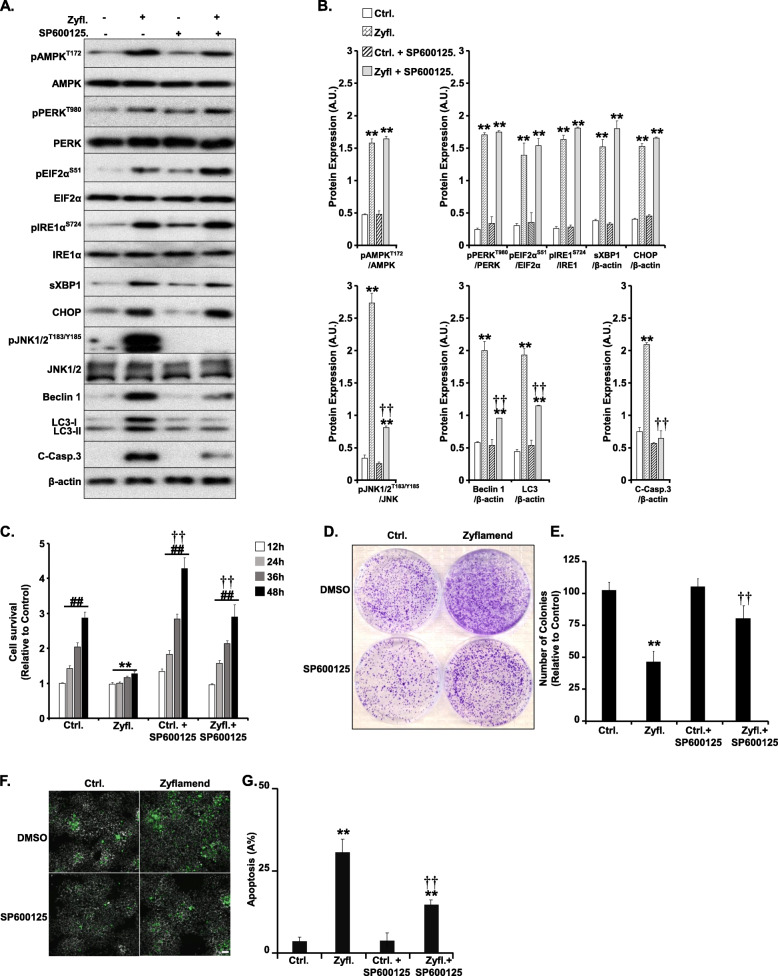Fig. 5.
JNK mediates Zyflamend-Induced Cell Death. a, b Cells were treated with 200 μg/ml of Zyflamend for the indicated time with or without SP600125. Total cell lysates were immunoblotted for markers of inflammation, ER stress, autophagy, and cell death. Bar graphs represent pAMPK/AMPK, pPERK/PERK, pEIF2α/EIF2α, pIRE1α /IRE1α, sXBP1/β-actin, CHOP/β-actin, pJNK/JNK, Beclin 1/β-actin, LC3II&II/β-actin, and cleaved caspase3/β-actin as means + SEM. *p < 0.05, **p < 0.01 indicate a significant difference between cells treated with Zyflamend and non-treated cells. †p < 0.05, ††p < 0.01 indicate a significant difference between cells treated with SP600125 and non-treated cells. c Bar graphs represent the intensity of SRB staining reflective of the cell number and presented as means + SEM from at least three independent experiments. *p < 0.05, **p < 0.01 indicate a significant difference between cells treated with Zyflamend and non-treated cells. †p < 0.05, ††p < 0.01 indicate a significant difference between cells treated with SP600125 and non-treated cells. d-e Colony formation assay. e Bar graphs represent the relative number of colonies in each condition determined by dividing the number of colonies for a given treatment by the total number of colonies in DMSO treated cells (Ctrl.) and expressed as a percentage. f-g Chromatin condensation in cells treated with 200 μg/ml of Zyflamend alone or in combination with SP600125 for 24 h . Representative images are shown. Scale bar: 50 μm. g Bar graphs represent the number of apoptotic cells (Hoechst positive) as means + SEM from at least three independent experiments. In E and G, **p < 0.01 indicates a significant difference between cells treated with Zyflamend and non-treated cells. ††p < 0.01 indicates a significant difference between non-treated and cells treated with SP600125

